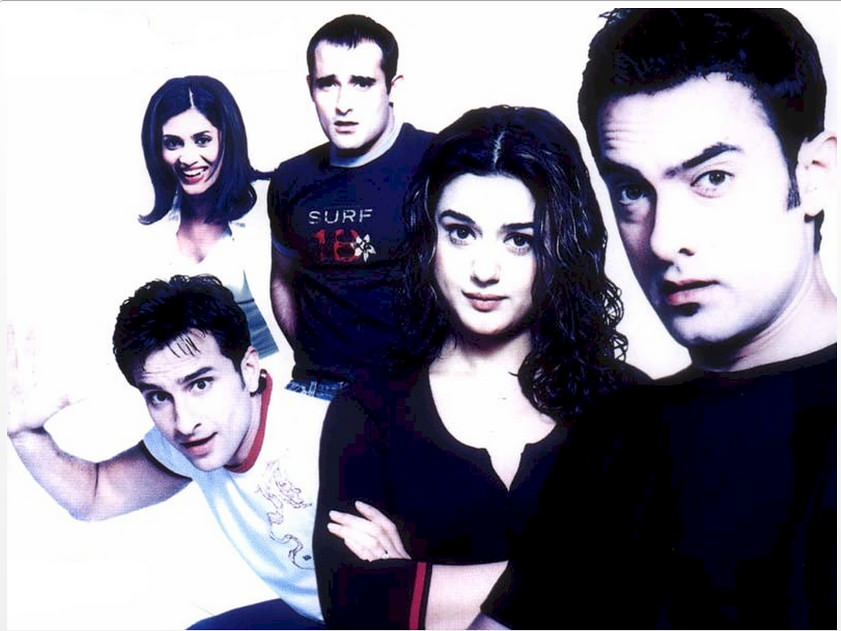Dil Chahta Hai


India
Dil Chahta Hai (The Heart Desires) (2001) was the directorial debut of Farhan Akhtar and starred Aamir Khan, Saif Ali Khan, and Akshaye Khanna. A story about romantic and homosocial relationships for upper-middle-class young men at the end of college, it is notable for being set in both Mumbai and Sydney. Akash (A. Khan), Sameer (S. Khan), and Sid (Khanna) are childhood friends distinguished as young adults by their different conceptions of and approaches to love. Unfolding through chapters loosely connected by the men’s friendship rather than any dominant narrative, the plot explores their relationships with different women. Structured by two holiday episodes set in Goa, early in Dil Chahta Hai and at its conclusion, their friendship is fractured but ultimately reconciled, and they each conclude the film with an “appropriate” love match. Akash had been unwilling to enter serious relationships but proposes to Shalini on the eve of her wedding to Rohit; Sameer proposes to Pooja after an arranged introduction by his parents; and Sid concludes the film sharing a romantic moment with an unknown woman in Goa, having had a controversial relationship with an older divorcee Tara, who has conveniently died of liver cirrhosis.
Largely told through flashback and hence beginning around the time of their college graduation, Dil Chahta Hai’s protagonists are older than typical teen film heroes but are framed as entering similar identity-forming periods. Sharing a view on the top of a ruin, Sid notes: “I’m looking at that ship that’s about to disappear over the horizon. The three of us are like that ship. Soon, we’ll set out looking for our destinations and it might just be that our destinations are different.” Reviews of the film suggest that its popularity with urban audiences in India, as well as non resident Indians, depended on its engagement with contemporary upper-middle-class Indian youth culture, including college graduation, holiday travel, diglossic Hinglish, clubbing, resistance to traditions such as arranged marriage, and adult toys like a BMW convertible and Yamaha waverunner. The Indian Express exclaimed: “Finally, a film that the youth of this country can unabashedly embrace!” This is typical of a transition from a national Indian cinema to global Bollywood, in which the focus of many Hindi films has shifted from implied statements about Indian nationhood to representing the lifestyle of a new consumer class (Rajagopal 2008). Arvind Rajagopal (2008, 302) suggests this has involved a narrowing of India’s imagined community, and “A film like Dil Chahta Hai . . . altogether eliminates any People Like Them, of PLT, to use the appropriate marketing parlance”. The song “Jaane kyon”, including didgeridoo as musical backing, represents Akash and Shalini’s courtship at numerous postcard locations, including Hyde Park, Centrepoint Tower, the Sydney Harbour Bridge, and the Sydney Opera House. The Australian setting effaces such questions about Indian nationhood, and extends the appeal of an aspirational, transnational romance for a global audience (Hassam 2006). – Liam Grealy
Further reading:
– Hassam, A. (2006). From “Kangaroo” to “Salaam namaste”: Australia as an exotic film location. Hungarian Journal of English and American studies, 12(1/2), 19-29.
– Rajagopal, A. (2008). Afterword: Fast-forward into the future, haunted by the past: Bollywood today. In A. P. Kavoori & A. Punathanbekar (Eds.), Global Bollywood (pp. 300-306). New York and London: New York University.